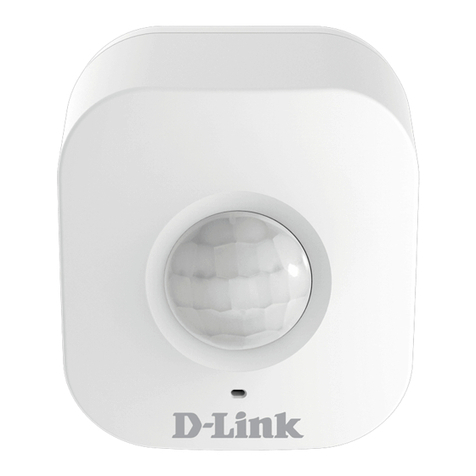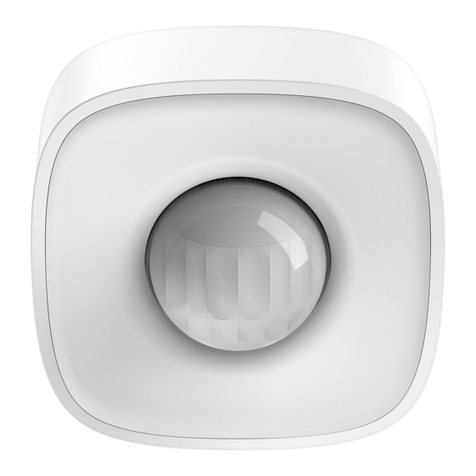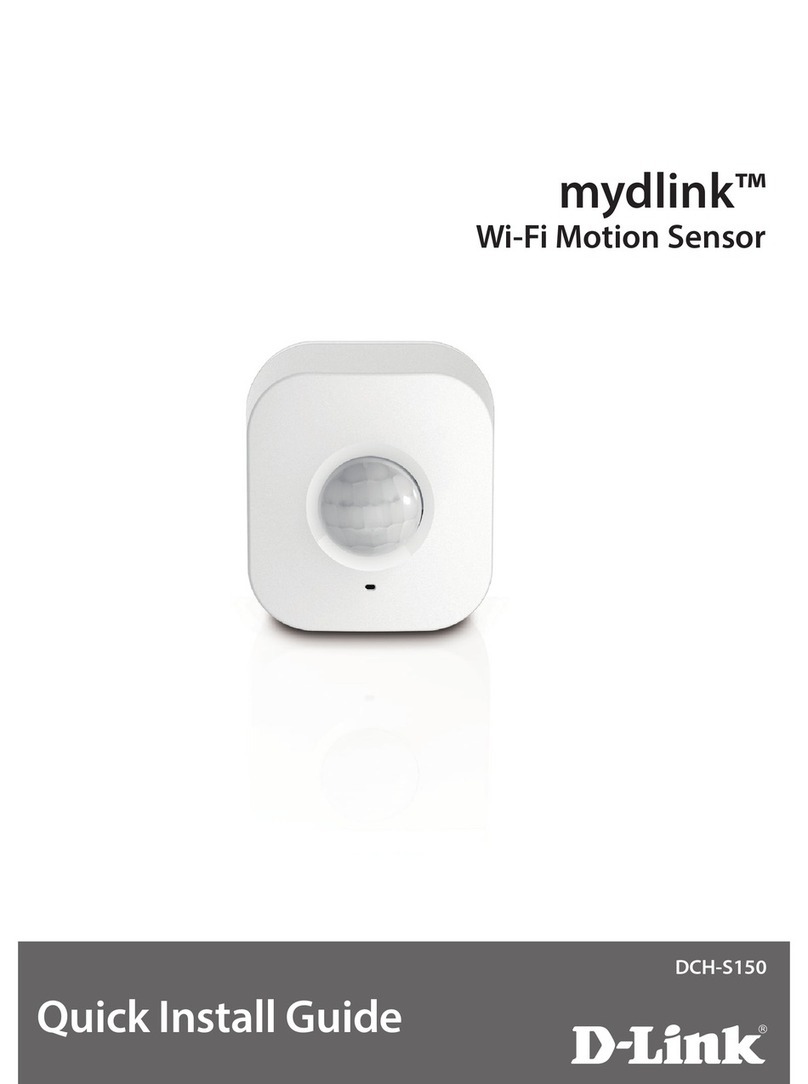Remove
1. Have Z-WaveTM Contro er entered exc usion mode.
2. Pressing tamper key three times within 1.5 seconds
to enter the exc usion mode.
Node ID has been exc uded.
Reset
Notice: Use this procedure only in the event
that the primary controller is lost or
otherwise inoperable.
1. Pressing tamper key four times within 1.5 seconds
and do not re ease the tamper key in the 4th
pressed, and the LED wi ight ON.
2. After 3 seconds the LED wi turn OFF, after that
within 2 seconds, re ease the tamper key. If
successfu , the LED wi ight ON one second.
Otherwise, the LED wi f ash once.
3. IDs are exc uded and a settings wi reset to
factory defau t.
Association
1. Have Z-WaveTM Contro er entered association
mode.
2. Pressing tamper key three times within 1.5 seconds
to enter the association mode.
Note: The device support 2 groups. The group 1 is for
receiving the report message, ike triggered event,
temperature, i umination etc. The group 2 is for ight
contro , the device wi send the “Basic Set” command
to this group. And each group support 8 nodes
maximum.
•Fai ed or success in add/remove the node ID can be viewed
from Z-WaveTM Contro er.
Notice 1: A ways RESET a Z-WaveTM device before trying to add it to a
Z-WaveTM network
Notice 2: When the device into NWI mode, the sensor functiona ity
wi use ess. The NWI mode wi timeout after 30 seconds. You can
press the tamper key 3 times to abort the NWI mode.
Z-WaveTM Notification
After the device adding to the network, it wi wake-up once per day in
defau t. When it wake-up it wi broadcast the “Wake Up Notification”
message to the network, and wake-up 10 seconds for receive the
setting commands.
The wake-up interva minimum setting is 30 minutes, and maximum
setting is 120 hours. And the interva step is 30 minutes.
If the user want to wake-up the device immediate y, p ease remove the
front cover, and press the tamper key once. The device wi wake-up 10
seconds.
Z-WaveTM Message Report
When the PIR motion triggered , the device wi report the trigger event
and a so report the battery status, temperature and i umination eve .
In defau t the device wi using Notification Report to represent the
trigger event, it can be changed to Sensor Binary Report by setting the
configuration NO. 7 Bit4 to 1.
* Motion Report:
When the PIR motion detected, the device wi unso icited to send the
report to the nodes in the group 1.
Notification Report (V4)
Notification Type: Home Security (0x07)
Event: Motion Detection, Unknown Location (0x08)
Sensor Binary Report (V2)
Sensor Type: Motion (0x0C)
Sensor Va ue: 0xFF
2





























